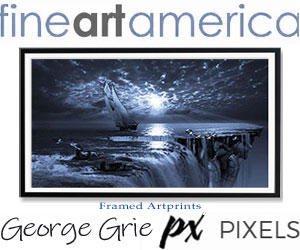Page 13 || Encyclopedia Article || Fantasy Arts || Modern Modern Surrealism Art Observation || Mythology
B Hebrew and Early Christian Interpretations
In the Hebrew tradition, the break from mythology took a different direction than it had taken among the Greeks. Here, the source of tension was not the incompatibility of myth and reason-as it had been with the Greeks-but the incompatibility of Near Eastern polytheism (belief in many gods) and Hebrew monotheism. Greek thinkers resolved the primary tension (myth versus reason) by identifying the divine figures in Near Eastern mythology as natural elements and forces, such as the sun and the wind. The Hebrew Bible resolved the primary tension (polytheism versus monotheism) by concentrating on the role of a supreme god and by minimizing or eliminating the roles of all other characters who could be considered divine.
As classical civilization gave way to Christianity, Christian thinkers argued about the role of myth in their religion. The traditional myths had undergone criticism and reinterpretation by Greek writers from Xenophanes to Lucian, over a period of seven centuries. Most Christian thinkers found this philosophical critique-particularly euhemerism-useful in their struggle against pagan culture and its worship of many gods. They argued that the pagan gods were actually no more than human rulers who had been mistakenly deified by their followers. Some Christian thinkers, however, attempted to establish a parallel between Christian ideas and certain aspects of pagan mythology. In the 2nd century, theologian Justin Martyr drew a comparison between Hermes (the divine messenger) and Christ (the representative of God). In the 4th century, theologian Saint Augustine argued that Christians should utilize the traditions of the pagan world in furthering the Christian worldview.
In this spirit, pagan mythological themes were reinterpreted and used symbolically in early Christian art. For example, a common motif of pagan art was the figure of Odysseus bound to the mast of his ship so that he could hear the irresistibly sweet singing of the Sirens without danger of temptation. In Christian art, this motif was adapted to symbolize a soul bound to the wood of the cross, through which the believer enters the port of salvation. Other traditional pagan motifs that were used in Christian allegories include Helios on his chariot of fire (Christ, the "light of the world" in biblical language) and the figures of Cupid and Psyche (Christ and the soul). See also Early Christian Art and Architecture.
C The Middle Ages and Renaissance
In the Middle Ages (5th century to 15th century) allegorical interpretation of the ancient myths predominated. Even the works of the ancient Roman poet Ovid, whose writings about the pagan gods were famous for their irreverence and bawdiness, received allegorical interpretation. For example, Ovid's Metamorphoses includes a story of how Zeus fathered Perseus by approaching Danae in a shower of gold; this tale was interpreted in light of the biblical story of Mary's virgin conception of Jesus. The entire Metamorphoses offered a rich source of material for medieval Christian allegory, starting with its tale of the creation and universal flood, and continuing through the flight of Phathon (who foolishly tried to drive the chariot of the sun) to the long philosophical speech of Greek philosopher Pythagoras at the end.
Mythological interpretation in the Renaissance (14th century to 17th century) continued the allegorizing approach of the Middle Ages. An old idea that enjoyed a new vogue in the Renaissance was astrology, which associated the personalities of the pagan gods with the planets that bore their names-Venus, Jupiter, Mars, and so forth. In a more philosophical vein, the Neoplatonist thinkers in Italy-especially Marsilio Ficino and Giovanni Pico della Mirandola-attempted to reconcile pagan mythology with Christian theology. Typically, however, Renaissance thinkers interpreted the material of pagan mythology in an imaginative rather than theoretical manner, drawing upon it for inspiration in painting and poetry.
